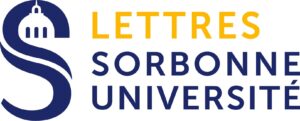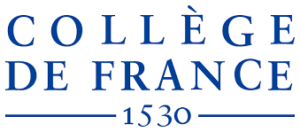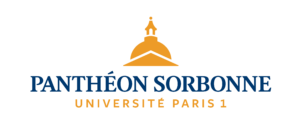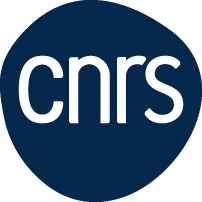From quarries to rock-cut site echoes of stones crafting
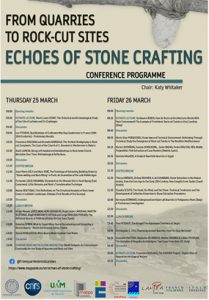
Chair: Katy Whitaker
-
- THURSDAY 25
Morning
The archaeological study of quarries focuses mainly on the reconstruction of the extraction process, while rock-hewn spaces have often been approached from the point of view of architectural styles or artistic expressions. Nevertheless, a holistic structural approach to the study of these spaces could allow a better understanding of the agency of those who carved the stone. The conference aims at promoting the international debate on the archaeological investigation of ROCKCUT SPACES and STONE QUARRIES, considered as aspects of the same mining phenomenon: places in which specific empirical and handcrafted knowledge related to stone working is expressed and conveyed.
09:00 Opening remarks
09:20 KEYNOTE LECTURE: MARIE-LAURE DERAT, The historical and archaeological study of the site of Lalibela and its challenges
09:40 Discussion
09:55 LUC STEVENS, Qualifications of craftsmen who dug souterrains in France (Xth-XVIth centuries) – Preliminary results
10:15 FRANCESCA SOGLIANI AND BRUNELLA GARGIULO, The vertical stratigraphy in rock-cut complexes: the case of the church of S. Giovanni in Monterrone in Matera
10:35 ANAÏS LAMESA, Being left-handed in rock-hewn church worksites in Ethiopia: looking back at a research methodology
10:55 Discussion
11:10 COFFEE BREAK
11:20 JEAN-PIERRE GÉLY AND MARC VIRÉ, The technique of extracting building stone by « stone-walling and back-filling » in Paris: an innovation of the late Middle Ages
11:40 FERNANDO LIGUE-ENGAMBA, Stone work on the Mvanda site in Haut-Nyong (East Cameroon): lithic remains and rock’s transformation technique
12:00 MANON ROUTHIAU, First reflections on the structural analysis of rock-hewn caves in Lalibela’s landscape, Ethiopia (first results of the surveys)
12:20 Discussion
12:35 LUNCH BREAK
Afternoon
The archaeological study of quarries focuses mainly on the reconstruction of the extraction process, while rock-hewn spaces have often been approached from the point of view of architectural styles or artistic expressions. Nevertheless, a holistic structural approach to the study of these spaces could allow a better understanding of the agency of those who carved the stone. The conference aims at promoting the international debate on the archaeological investigation of ROCKCUT SPACES and STONE QUARRIES, considered as aspects of the same mining phenomenon: places in which specific empirical and handcrafted knowledge related to stone working is expressed and conveyed.
13:45 VÍCTOR MANUEL LÓPEZ-MENCHERO BENDICHO, ÁNGEL JAVIER CÁRDENAS MARTÍN-BUITRAGO, ÁNGEL MARCHANTE ORTEGA AND JORGE ONRUBIA PINTADO, The millstone quarry of Piédrola (Alcázar de San Juan, Spain)
14:05 KATARINA ŠPREM, What to Expect When You’re Documenting and Excavating a Roman Quarry – Monte Del Vescovo, Istria, Croatia
14:25 DANIEL MORLEGHEM, When quarry waste explains tool marks
14:45 Discussion
15:00 SHARING IDEAS AND BUILDING BRIDGES, The IRAAR network: an international community for the study of quarries and rock-cut sites
-
-
- FRIDAY 26
-
Morning
The archaeological study of quarries focuses mainly on the reconstruction of the extraction process, while rock-hewn spaces have often been approached from the point of view of architectural styles or artistic expressions. Nevertheless, a holistic structural approach to the study of these spaces could allow a better understanding of the agency of those who carved the stone. The conference aims at promoting the international debate on the archaeological investigation of ROCKCUT SPACES and STONE QUARRIES, considered as aspects of the same mining phenomenon: places in which specific empirical and handcrafted knowledge related to stone working is expressed and conveyed.
09:00 Opening remarks
09:20 KEYNOTE LECTURE: GUILLAUME ROBIN, How do rock-cut architectures relate with their environment? The example of prehistoric rock-cut tombs in Ossi, Sardinia (Italy)
09:40 Discussion
09:55 MARIE-ELISE PORQUEDDU, Know-how and technical environment: rethinking through technical study the emergence of rock-cut tombs in the Neolithic Mediterranean
10:15 NURIA CASTAÑEDA, SUSANA CONSUEGRA, PEDRO DÍAZ-DEL-RÍO, JAVIER BAENA, Middle Palaeolithic flint extraction at Casa Montero (Madrid, Spain)
10:35 DANIELA GALAZZO, A study of quartzite quarries in Egypt
10:55 Discussion
11:10 COFFEE BREAK
11:20 THIERRY GRÉGOR, JÉRÔME ROHMER, A. ALSUHAIBANI, Stone extraction in Northwest Arabia, from the Iron Age to the early 20th century. New insights from Dadan (Saudi Arabia)
11:40 CLAUDIA SCIUTO, The hand, the mind, and the stone: technical tendencies and the development of collective know-how in stone extraction procedures
12:00 GERMANO GERMANÒ, Underground and open-pit quarries in Polignano a Mare (Italy): a preliminary investigation
12:20 Discussion
12:35 LUNCH BREAK
Afternoon
The archaeological study of quarries focuses mainly on the reconstruction of the extraction process, while rock-hewn spaces have often been approached from the point of view of architectural styles or artistic expressions. Nevertheless, a holistic structural approach to the study of these spaces could allow a better understanding of the agency of those who carved the stone. The conference aims at promoting the international debate on the archaeological investigation of ROCKCUT SPACES and STONE QUARRIES, considered as aspects of the same mining phenomenon: places in which specific empirical and handcrafted knowledge related to stone working is expressed and conveyed.
13:45 PAUL PEIGNOT, The Alleged pre-Nabataean chambers at Hegra
14:05 CHRISTOPHER J. LYES, Theorising Ancient Quarries:How far have we come?
14:25 GIANCARLO PASTURA, ELISABETTA DE MINICIS, MATTEO ZAGAROLA, LETIZIA TESSICINI, The evolution of negative architectures: two cases from Orte (VT, Italy)
14:45 Discussion
15:00 KEYNOTE LECTURE: FRANCESCA SOGLIANI, The DARHEM project – Digital Atlas of Rupestrian Heritage of Matera
15:20 Discussion
